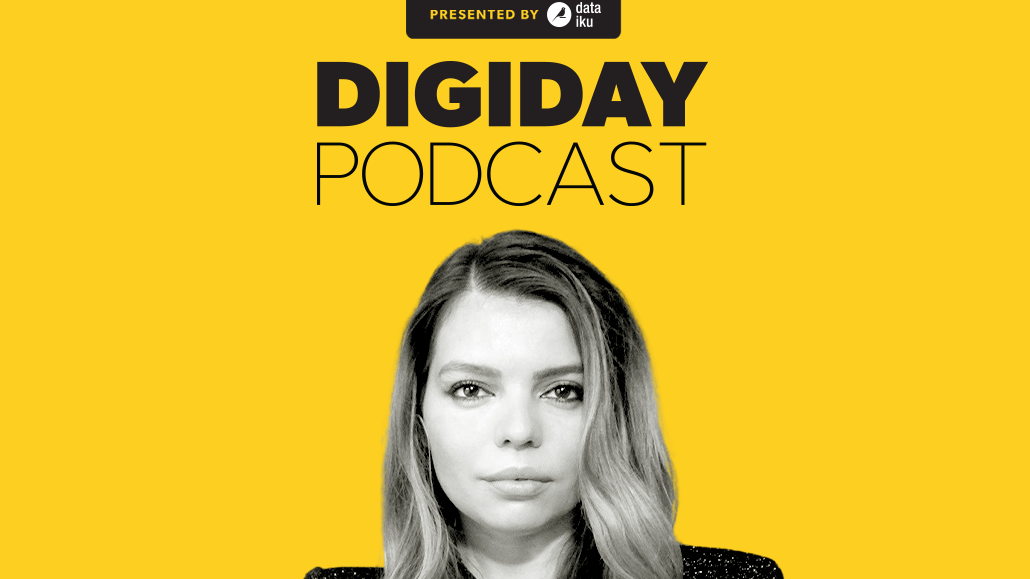Insights from CTV leaders at Dentsu, Horizon Media and more
How The Newsette’s founder earned $40M for the media company in 2021

Daniella Pierson founded the daily lifestyle- and business-focused newsletter, The Newsette, while on break during her sophomore year of college, and over seven years, has turned it into a $40 million business. That’s thanks to, she said, a subscriber base of 500,000, that helped lead the company to end 2021 with a profit worth eight figures.
Now, the 26-year-old entrepreneur, who also serves as the CEO of the media company, is planning to invest millions of dollars throughout the company to grow the business this year, including the newly formed creative agency arm, called Newland.
On the latest episode of the Digiday Podcast, Pierson acknowledged that growth didn’t come without challenges: “It really was touch and go until the last few years,” she said, and her team only recently doubled in size this year to 25 people. It’s “really important for young entrepreneurs to know that just because something isn’t taking off and making millions of dollars a year or two, doesn’t mean that it can’t and year five.”
Pierson herself is also channeling her entrepreneurial spirit in new ways this year by working with co-founders Mandy Teefey and Selena Gomez to create Wondermind, a start-up centered on democratizing access to mental health care that operates a production studio, media arm and product business.
Below are highlights from the conversation, lightly edited for clarity.
Growing ad revenue exponentially through a pandemic
We started working with Fortune 500 clients in a bigger way. [We were] showing them [that] you could spend $100,000 on this website, where they say they get 20 million impressions or views a month, but what does that really translate to in an article? If you are one of 5,000 articles on that website that gets published every single month, do the math — you’re ending up with not a lot of readers on the article. And so I think when people realize how much more powerful advertising with us [is], and how many more eyeballs and more engagement and more clicks we are able to drive, that was a huge sign for them that they should continue to invest a lot of money. I almost feel like there’s this incredible wave now, where people are seeing newsletters as the solution to that dilution of audience that a lot of traditional websites provide.
Quality over quantity
We’ve been so focused on cleaning our list, so unlike other newsletters, where every year it grows by 500,000 or a million [subscribers], we’ve been really focused on having the best 500,000 people on our list. Then we’re able to show clients, “Look how many people are looking at your content. Look at how many people are clicking.” Maybe other email newsletters are just trying to grow the top number, and not really purging so that their top-line number can be big. But then when people see results, it’s a little disappointing.
Turning advertisers into agency clients
The reason why we are spending millions of dollars to grow not only the media business but also the agency business this year is because every single client we have for the agency business came from the media side of the business. And now we’re finally opening ourselves up to capacity to choose a select few clients that maybe we didn’t have on our radar before, who fit what we’re trying to do and are excited about the amplification that we do.
We’re also able to strategize the creative, but also the amplification, by handling the strategy, the creative, the social, paid social strategy, and the PR holistically. And that combination of offering all makes it so that the CPMs are lower for clients [and] we over-deliver on impressions. That’s really the magic of being able to have one team really care about this as if it was a media company, and really just hone in and figure out how we can make it win for everybody.
More in Media

Digiday+ Research: Publishers pull back their dependence on digital revenue
After a year in which publishers shifted their revenue dependence away from traditional channels and toward digital channels, 2025 has seen a shift back toward more of a balance between traditional and digital revenue sources.

LinkedIn makes it easier for creators to track performance across platforms
Creator data is becoming more accessible to third-party vendors via a new API — another step in LinkedIn’s creator platform evolution.

Ad Tech Briefing: The ‘plumbers’ posing as the unlikely saviors of the internet
After several false dawns, can Cloudflare’s ‘anti-AI scraping tool’ finally offer publishers a road to commercial redemption?








